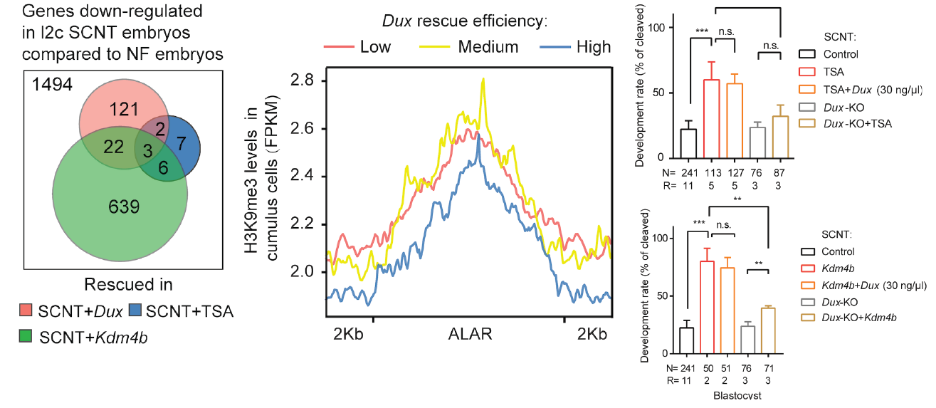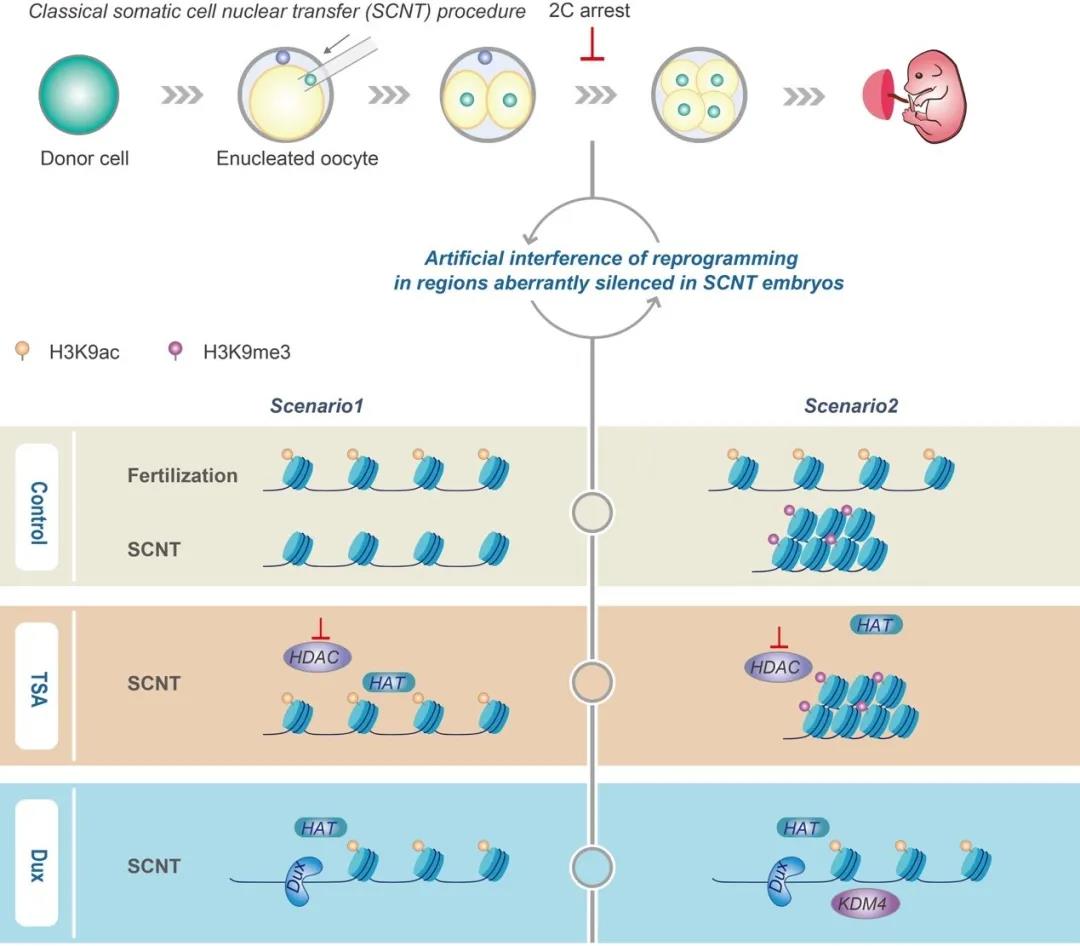On Oct.12th, Prof. Gao, Jiang and Chen published their latest research paper “Dux-Mediated Corrections of Aberrant H3K9ac during 2-Cell Genome Activation Optimize Efficiency of Somatic Cell Nuclear Transfer” on Cell Stem Cell. By analyzing H3K9ac profiles of IVF, SCNT and SCNT+TSA embryos in parallel, they found regions of aberrant acetylation (AARs) greatly hindered the development of SCNT reprogramming. TSA, an HDAC inhibitor, partially rescued AARs. However, TSA worked in a manner that was highly dependent on native epigenetic environment, leading to failure of reprogramming in regions with low chromatin accessibility. By motif analysis of H3K9ac dynamics during ZGA progress they identified Dux as a potential tool for SCNT rescue. They overexpressed Dux in SCNT embryos and successfully enhanced in vivo development of cloned mice. Next, they provided detailed mechanism explanation of DUX elevating H3K9ac and illustrated that tranditional enzyme-based rescue methods like TSA and Kdm4 heavily relied on the activation of Dux locus.



Ph.D candidate Guang Yang, Dr.Linfeng Zhang and Dr. Wenqiang Liu are co-first authors of this ariticle. Prof. Cizhong Jiang, associate Prof. Jiayu Chen and Prof. Shaorong Gao are co-corespondence authors of this ariticle.
source:https://doi.org/10.1016/j.stem.2020.09.006
https://news.tongji.edu.cn/info/1003/75255.htm